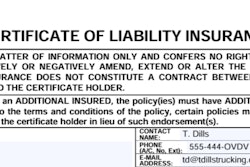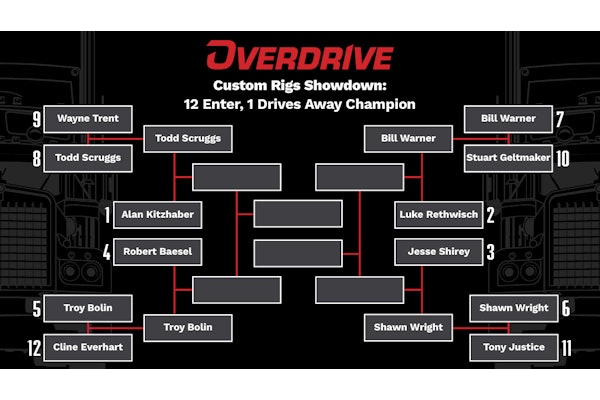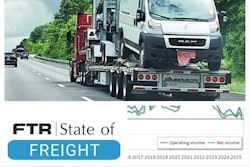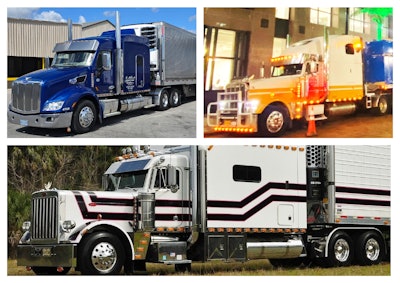
Beyond keeping a clean driving and inspection history, and working with an insurance agent who can be a real advocate for you (as detailed in the first part of this story), other ways for owner-operators and small fleets to reduce insurance premiums include practices that present an improved risk profile to insurers.
Investment in technology is one. Specifically, said Progressive Insurance Product Development Manager Peter Niro, enrollment in a telematics program can contribute to savings at renewal. “Telematics programs are unique in that they help a customer to influence their insurance costs more directly," he said, "and reward them for safe driving habits in the form of lower rates.”
Though not available in all states and situations, Progressive offers at least a 5% discount for new customers enrolling in the company’s Smart Haul program with a partner vendor’s electronic logging device (ELD). Niro noted that with an established safety record, Smart Haul customers can save up to 12% or more. Installing Motive AI dashcams can net an additional 10% savings through the program. Smart Haul customers with safe operating records save an average of $4,623, or 18%, Niro added.
It’s worth noting, however, that the wrong sort of driving data might also cause premiums to increase.

Owner-operator Michael Castaldi, who’s been working with the same insurance broker since he got his own authority in 1994, said his agent suggested he install a dashcam on the truck. Though the discount for installing one for him isn’t itemized on his insurance policy, Castaldi noticed there were “big increases across the board" for other owners the year he installed the camera tech, he said, "but mine didn’t go up to speak of.”
Gallagher Insurance Managing Director of Transportation Chris Demetroulis noted that beyond just installing a dashcam or other technology that could help cut premium costs, many insurance companies today also want to see those technologies implemented and utilized to improve safety.
“I think what we've seen over the last 10 to 15 years is an evolution of that, where the credits have gone away, but the underwriters really take into consideration the implementation, the execution and then the reduction in the actual events and the dollar size of the claim,” he said. “Now you’re seeing that you actually have to coach it. You have to make sure your drivers are doing the right thing.”
[Related: Yes, you can reduce your trucking insurance premium. Here's proof]
Laurren Jaeger, who manages the back-office work for owner-operator Clifford Hay II and his Clifford Hay Trucking business, said that in the 13 years she’s been working for the six-truck small fleet, insurance premiums have “probably doubled” during that time. She said Hay has been thinking about switching ELD providers to help reduce his own premiums to Rand McNally, adding hard-wired dashcams. Those will bring some savings from their insurance company, she noted
Jaeger said their company readily anticipates insurance pricing to increase every year -- they budget to put that increase into a separate account so it’s there when needed.
For other owner-operators and small fleets, Jaeger advised the best thing you can do is “be honest” and make sure insurance companies get the full picture of your business. “I think at the end of the day,” when trucking companies are dishonest and try to hide issues to lower premiums, “that hurts everybody, because when things happen, that’s why everything gets so expensive,” she said.
Another possible way smaller fleets can use telematics to save is opting in on a usage-based policy, where you pay according to actual miles exposure rather than theoretical risk. In most cases, however, such policies are reserved for companies with at least 10 trucks, according to Demetroulis.
Progressive’s Niro said with a usage-based, or pay-as-you-drive, policy, motor carriers are charged a rate per mile driven over the course of the policy’s term. These often also include a minimum threshold for annual mileage. Progressive Fleet works with truck specialist agencies to offer mileage reporting form policies to eligible motor carriers only with 25 units or more.
[Related: New avenue to usage-based insurance]
Does it pay to shop around?
The answer to that question can go either way. There can be a benefit to staying with the same insurance company for long periods of time and building up a strong relationship.
However, on the flip side, if you feel like you’re paying too much or get on wrong side of an underwriter's rate-making formula, it might not hurt to look around.
“My increases haven’t been close to what I’m hearing.” --Owner-operator Michael Castaldi in the prior part of this feature, where he emphasizes bedrock safe operation and a clean record to keep costs low
Remember one-truck independent Michael Sparks and his proposed renewal earlier this year detailed in Part 1 of this story? Well, rather than just accept an extra $11K in costs for the year, he asked around and got wind of insurer Geico's relatively new commercial trucking insurance program, which got its start insuring local trucking companies in 2023. By the end of the year, the company began testing the waters with long-haul, and today their program is available in "approximately 65% of all markets," said company rep Ross Feinstein. Geico's in the process of "expanding nationwide through a phased approach."
Turns out Sparks' West Virginia location was one of those markets, and the owner-operator sought out a quote from the company. It came in with all his coverages -- liability, physical damage and cargo -- at about $14K annually, or $7K less than "what my previous insurance wanted," Sparks said. "Good coverage. That’s not too bad," though still higher than his prior policy had been before the renewal. "Could’ve been better, I’m sure, but that was the best rate I could find."
Overdrive’s February Trucker of the Month Kenny Wingate can attest to the benefits of shopping around, too. A business associate put him in touch with an insurance broker prior to his renewal this year and ended up saving him $1,400 a month on his premium. Wingate's running two trucks in the business, with a hired driver.
“We’re all guilty of just saying, ‘It’s just easier to renew,’” he said. “You usually don’t shop, but all it takes is to get out there and shop a little bit.”
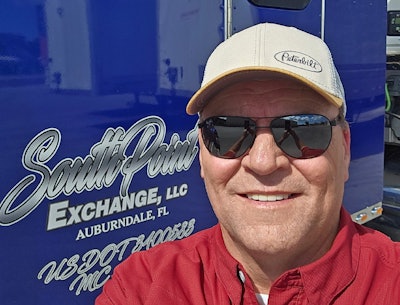 Kenny Wingate's shown here with his 2020 Peterbilt 579.
Kenny Wingate's shown here with his 2020 Peterbilt 579.
His advice to other owner-operators? “Don’t be afraid to shop. It’s time-consuming. It gets irritating sometimes, but just shop. Find you a good broker and … don’t wait until the last minute to start shopping.”
Gallagher’s Demetroulis, on the other hand, said if some insurance companies “see that a company is shopping every year, they’re not as apt to offer a proposal to them.”
At once, brokers and agents working on behalf of the trucking companies as his does should “make sure that that conversation is happening six months ahead of time to make sure there’s a true strategy,” he said. The broker should also be trying to negotiate a renewal or getting an idea of what the renewal is going to look like “in order to bring that to the small trucker to say, ‘Now let’s talk about our strategy.’"
"The open market’s there for a reason. However, if these small truckers are investing in the technology, they’re partnering and getting presentations from insurance carriers that are forward-looking in using that technology, that is where they should be focusing in trying to get proposals and presentations, so they can evaluate how that’s going to help their business going forward if they’re truly doing the coaching they should be doing.”
[Related: Usage-based insurance: Trucking's best-kept secret?]






